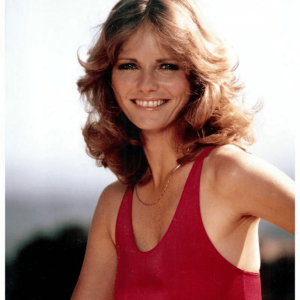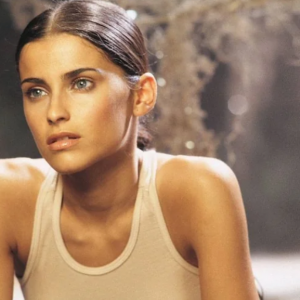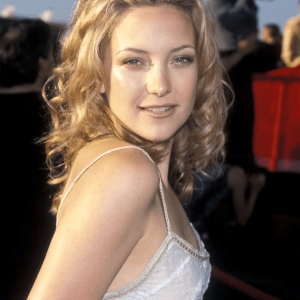In the fall of 1976, American television changed forever. Charlie’s Angels wasn’t just another detective series—it was a revolution dressed in bell-bottoms and leather jackets. Created by Ivan Goff and Ben Roberts, this seemingly glossy crime show gave audiences something they hadn’t seen before: three confident, capable, and stylish women solving crimes, running stings, and outsmarting villains—all while operating under the mysterious voice of their unseen boss, Charlie Townsend.
It could’ve been another gimmick. Instead, it became a cultural milestone. And decades later, the legacy of Charlie’s Angels continues to evolve, proving that when you challenge stereotypes head-on, the impact can last generations.

The Original Angels: Glamour Meets Grit
Farrah Fawcett, Kate Jackson, and Jaclyn Smith didn’t just play detectives—they embodied a new kind of female lead. Each had her own personality, backstory, and strengths. Jill Munroe (Fawcett) brought athleticism and charm, Sabrina Duncan (Jackson) was the smart strategist, and Kelly Garrett (Smith) was the poised and compassionate heart of the trio.
Together, they weren’t sidekicks or love interests—they were the story.
And sure, critics dubbed it “jiggle TV” in the beginning, mocking the show’s style and presentation. But viewers knew better. Beneath the glamorous exterior was a message that resonated: women could be smart, tough, fearless—and still wear heels if they wanted to.
Video: 20 Interesting Facts About Charlie’s Angels You Might Not Know
Rotating Cast, Steady Strength
As the seasons rolled on, Charlie’s Angels introduced new faces. Farrah Fawcett left after one season, but Cheryl Ladd filled the gap with ease as Jill’s younger sister, Kris Munroe. Her arrival added new energy and broadened the show’s appeal.
Kate Jackson’s departure brought Shelley Hack into the mix, followed by Tanya Roberts, creating a rotating door of Angels that kept things dynamic without losing the show’s essence. Despite the changes, one constant remained—Jaclyn Smith as Kelly Garrett. Her graceful presence helped anchor the series through every twist and cast shake-up.
These shifts gave the show an unusual flexibility. It adapted, evolved, and welcomed fresh takes on the core concept without sacrificing what fans loved most: strong women in charge.
Fading Lights: Why the Original Show Lost Steam

By the early 1980s, the magic started to dim. Ratings slipped. Critics grew harsher. What once felt groundbreaking began to feel like a formula. Frequent cast changes, shifting time slots, and an increasing focus on style over substance wore down the original spark.
Some fans struggled to connect with the newer Angels. Others felt the show had started to emphasize wardrobe changes and exotic locations more than clever mysteries. By its fifth season, Charlie’s Angels had fallen out of the top 30, and in 1981, it aired its final episode.
Still, it left behind something that couldn’t be measured by Nielsen ratings—a new blueprint for what female leads could look like in prime time.
The Big Screen Revival: 2000’s Modern Makeover

Two decades later, Charlie’s Angels roared back—this time on the big screen. Cameron Diaz, Drew Barrymore, and Lucy Liu stepped into the iconic roles with a new twist: action-packed stunts, comedic flair, and an unapologetically fun tone.
The 2000 film wasn’t trying to replicate the original show—it reimagined it. With fast-paced direction, slick fight choreography, and a tongue-in-cheek tone, it brought the Angels to a new generation. It also embraced diversity in casting, especially through Liu’s role, signaling that Charlie’s Angels was no longer just a nostalgia act. It had something new to say.
And audiences listened. The movie was a box office hit, proving that the Angels still had plenty of kick left in them.
Full Throttle and Full of Surprises
Video: Charlie’s Angels 1976 Cast then and Now
The sequel, Charlie’s Angels: Full Throttle (2003), doubled down on everything fans loved. Bigger stunts, flashier sequences, and deeper emotional beats. This time, the story explored betrayal, identity, and sisterhood in the middle of high-flying action.
With Bernie Mac joining as the new Bosley and appearances from Demi Moore and Pink, the movie oozed early-2000s cool. And while critics had mixed feelings about the film’s tone and spectacle, fans couldn’t get enough of the energy and style.
It proved that even when the story goes full throttle, the heart of Charlie’s Angels remains rooted in friendship, loyalty, and fearless women taking charge.
The 2011 Series Reboot: A Missed Opportunity
In 2011, the Angels attempted a return to the small screen. Unfortunately, the ABC reboot struggled to capture the original’s spirit—or its audience. Despite updating the setting and characters, the show lacked the chemistry and charisma that made the franchise work. After just seven episodes, the series was pulled.
But failure doesn’t erase a legacy—it only sharpens it.
2019’s Fresh Take: Changing the Rules Again

The most recent film installment came in 2019, directed by Elizabeth Banks and starring Kristen Stewart, Naomi Scott, and Ella Balinska. This version aimed to move the franchise even further from its roots—not just with action, but with a more grounded, empowering tone. The Townsend Agency was now global, and the Angels were no longer isolated figures—they were part of a network.
Though the movie didn’t perform well at the box office, it pushed the brand forward. It tackled themes of teamwork, intelligence, and mentorship while embracing a more contemporary lens on what heroism looks like.
It wasn’t perfect, but it was another bold swing from a franchise that’s never been afraid to reinvent itself.
The Legacy That Keeps Evolving
Charlie’s Angels helped rewrite the rules for women on television. It showed that female characters could be more than love interests or damsels in distress. They could lead the charge, carry a show, and still be stylish, witty, and unapologetically themselves.
Over time, the Angels have become more than characters—they’re symbols. Of resilience. Of reinvention. Of what happens when women get to own their narratives.
From Farrah’s feathered hair to Kristen Stewart’s modern edge, the face of the Angels has changed. But the message hasn’t. Strength comes in many forms—and when women lift each other up, nothing’s out of reach.
Conclusion: From Pop Icons to Timeless Trailblazers

Charlie’s Angels didn’t just entertain—it inspired. It opened doors, broke barriers, and challenged Hollywood’s tired stereotypes. Whether on TV or in theaters, its legacy proves that stories led by strong women not only deserve a spotlight—they shine in it.
So next time you hear that iconic voice calling in over the speaker, remember: the Angels aren’t just characters. They’re a movement. One that’s still flying high.


